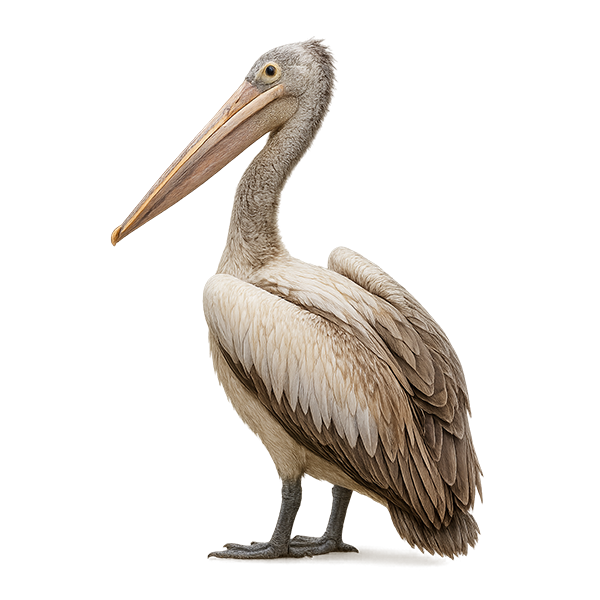Your wildlife photography guide.
Explore the spot-billed pelican in detail, study its behavior, prepare your shots.
Where to observe and photograph the spot-billed pelican in the wild
Learn where and when to spot the spot-billed pelican in the wild, how to identify the species based on distinctive features, and what natural environments it inhabits. The WildlifePhotographer app offers tailored photography tips that reflect the spot-billed pelican’s behavior, helping you capture better wildlife images. Explore the full species profile for key information including description, habitat, active periods, and approach techniques.
Spot-billed Pelican
Scientific name: Pelecanus philippensis

IUCN Status: Near Threatened
Family: PELECANIDAE
Group: Birds
Sensitivity to human approach: Suspicious
Minimum approach distance: 10 m
Courtship display: December to February
Incubation: 30-33 jours
Hatchings: December to March
Habitat:
wetlands, lakes, rivers
Activity period :
Primarily active during the day, with peak activity in the morning and late afternoon.
Identification and description:
The Spot-billed Pelican, or Pelecanus philippensis, is a large aquatic bird known for its distinctive spotted bill. It primarily inhabits the wetlands of South and Southeast Asia, including India, Sri Lanka, and Indonesia. This pelican feeds mainly on fish, which it catches using its long and powerful bill. Often seen in groups, it nests in trees near water bodies. Although its conservation status is concerning, efforts are underway to protect its natural habitats. The Spot-billed Pelican's plumage is mostly white with shades of grey, and it boasts an impressive wingspan that allows it to glide gracefully over the waters.
Recommended lens:
400mm – adjust based on distance, desired framing (portrait or habitat), and approach conditions.
Photography tips:
To photograph the Spot-billed Pelican, opt for early morning or late afternoon hours to take advantage of soft lighting. Use a telephoto lens of at least 400mm to capture precise details without disturbing the bird. Maintain a distance of at least 10m to avoid disrupting its natural behavior. Wetlands often provide interesting backgrounds, so try to incorporate them into your composition. Be patient and wait for the pelican to spread its wings for spectacular shots.
The WildlifePhotographer App is coming soon!
Be the first to explore the best nature spots, track rutting seasons, log your observations, and observe more wildlife.
Already 1 432 wildlife lovers subscribed worldwide

